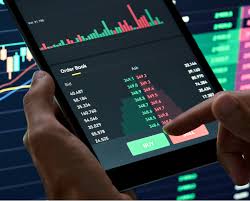
Understanding Crypto Trading Heatmap: A Comprehensive Guide
The world of cryptocurrency is vast and complex, with thousands of coins and tokens competing for attention in the market. To navigate this intricate landscape effectively, traders require innovative tools—one of which is the Crypto Trading Heatmap. This tool visualizes market trends, providing insights that are crucial for making informed trading decisions. For more in-depth resources on cryptocurrencies, Crypto Trading Heatmap click here to explore an extensive list of related assets and insights.
In this article, we will delve into what a Crypto Trading Heatmap is, how to interpret it, its components, and its significance in trading strategies. Understanding this tool can greatly enhance your ability to react to market movements and optimize your trading performance.
What is a Crypto Trading Heatmap?
A Crypto Trading Heatmap is a visual representation of the market performance of various cryptocurrencies. It typically shows various coins and their corresponding performance metrics, such as price changes, market capitalization, and trading volume, represented in color-coded formats. The use of color makes it easier to discern market conditions at a glance—green often signifies gains while red indicates losses.
Key Components of a Heatmap
A comprehensive Crypto Trading Heatmap consists of several vital components:
- Color Coding: The primary feature of the heatmap is its color scheme. Green shades represent positive price movement, while red shades indicate declines. This allows traders to quickly analyze which cryptocurrencies are performing well and which are underperforming.
- Price Performance: Heatmaps convey price data, often showing percentage changes over specified time frames (e.g., 1 hour, 24 hours, 1 week). This helps traders spot opportunities based on recent price action.
- Market Capitalization: Most heatmaps include market cap data, which ranks cryptocurrencies by their total market value. This is crucial for understanding the relative size and influence of different assets in the market.
- Trading Volume: Heatmaps often highlight the trading volume for each cryptocurrency, indicating how actively coins are traded. High trading volume might indicate strong interest and liquidity.
How to Read a Crypto Trading Heatmap
Reading a Crypto Trading Heatmap is straightforward, but understanding its nuances requires some practice. Here are tips for interpreting the data:

- Scan for Color Changes: Begin by scanning the heatmap for colors—identify predominantly red or green areas. If a significant portion is red, it could indicate a bearish market.
- Check Coin Performance: Click on specific coins that pique your interest. The heatmap may provide detailed information on price trends, highs/lows, and major shifts.
- Analyze Market Cap Rankings: Focus on market cap data to gauge the strength of a cryptocurrency. Higher-ranked coins generally have greater influence in the market, and their performance can often sway market sentiment.
- Monitor Trading Volume: Observe trading volume alongside price performance—high volume during price increases often indicates strong buying interest, while high volume during declines may suggest panic selling.
The Significance of Crypto Trading Heatmaps
Crypto Trading Heatmaps are invaluable for several reasons:
- Quick Decision Making: In a fast-paced market, time is of the essence. Heatmaps condense vast data into easily digestible visuals, allowing traders to make quick decisions.
- Market Trends Insight: By observing the broader market trends at a glance, traders can identify potential breakout or breakdown scenarios, enabling proactive trading strategies.
- Portfolio Management: Traders can assess the performance of their cryptocurrency portfolios in relation to the overall market, making necessary adjustments when needed.
Practical Application of Heatmaps in Trading Strategies
Using a Crypto Trading Heatmap can enhance various trading strategies:
- Identifying Entry and Exit Points: Traders can use heatmaps to identify where to enter or exit positions based on real-time performance data. For instance, if a coin shows substantial growth and remains in the green consistently, it may signal a good buying opportunity.
- Momentum Trading: Momentum traders can leverage heatmaps to spot strong trends quickly. If several coins within the same sector are showing upward momentum, this may be a signal to take advantage of the trend.
- Diversifying Portfolios: Heatmaps help traders diversify their portfolios effectively by identifying sectors or coins that are underperforming in relation to others.
Limitations of Crypto Trading Heatmaps
While heatmaps offer valuable insights, they are not infallible tools. Some limitations include:
- Lagging Indicators: Heatmaps may not always reflect real-time circumstances, as they often rely on historical data to present trends.
- Market Manipulation: In a volatile market, rapid price changes can distort heatmap readings, leading to potential misjudgments.
- Lack of Context: Heatmaps don’t provide deep insights into the factors that drive price movements, so they should be used in conjunction with other analytical tools.
Conclusion
In conclusion, the Crypto Trading Heatmap is a powerful tool that can significantly enhance your trading strategies and decision-making processes. By offering a clear and concise visual representation of cryptocurrency performance, it enables traders to identify trends, spot opportunities, and react swiftly to market changes. However, it’s essential to understand its limitations and use it alongside other analytical methods to ensure a well-rounded trading approach. As the cryptocurrency landscape continues to evolve, leveraging tools like heatmaps will become increasingly vital for successful trading.
